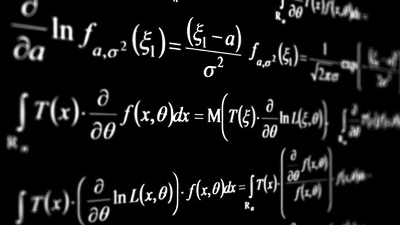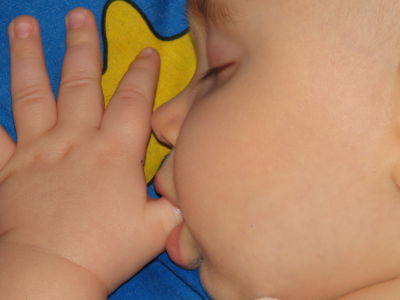How to make it successful by actually doing a 'programming classroom' for 6-year-old children

By
Many engineering professionals are asking questions on Stack Overflow on 'how to teach programming to children.' Most of the answers are based on the idea that 'computers are stupid, so we have to teach them very accurately how to operate them', but this teaching method is 'interesting. `` There is doubt about whether you can understand programming, but there is doubt about it, '' said Tomek Kachanovsky, a programmer who tried a different approach to `` how to teach programming to a 6-year-old child ''. I 'm spelling out a community ' dev.to ' to share ideas.
Explaining Programming to 6 Years Old Kids
https://dev.to/tkaczanowski/explaining-programming-to-6-years-old-kids
Programmer Tomek Kachanovsky said he had recently had two programming classes for children, and there are two successful factors in teaching programming to a 6-year-old child:
・ Attract children's attention by drawing what they are talking about
Mr. Kachanovsky said he had drawn a very large flip chart while explaining programming in a programming class he had done before. The child was engrossed in the funny picture, and he was listening to the explanation while laughing, without losing his concentration.
・ Explanation based on what the child knows
These days, children watch anime on YouTube, play games on tablets, and watch their working parents on their computers. Children know that movies are recorded on discs like CDs and DVDs, and they also understand that smartphones and tablets are very similar devices. In other words, it will be easier to understand if you explain based on YouTube and smartphones that children may have in their normal lives.
Kachanovsky said that he started at the beginning of the programming class last time, by asking the question, 'Does anyone know anything about programmers?' Despite the various opinions expressed by children, Kachanovsky said in the end, 'The programmer is the person who writes the computer program. The programmer knows the words to teach the computer what to do. A programmer is someone who knows a lot about computers. '
Next, when Kachanovsky asked 'What is a computer?', All the children started talking about notebooks used by their parents. After that, Mr. Kachanovsky taught that computers are used not only in laptops but also in smartphones, watches, automobiles, etc. In addition, by explaining what kind of role a computer plays in the smartphones and automobiles that we have shown, children will begin to understand the concept of 'computer.'
When Kachanovsky asked, 'How does the weather forecast work?', One smart child said, 'The satellite knows the weather of tomorrow.' In addition to that, Kachanovsky explained that many machines (observation devices) send data to computers to predict tomorrow's weather.

After teaching enough about 'computers', Mr. Kachanovsky started explaining 'programs'. 'Computers are working thanks to' programs 'that teach them to do certain things,' he said. To better understand this, Mr. Kachanovski painted the YouTube UI and asked, 'How many videos are there in YouTube?' Most of the children were confused and some screamed 'millions!' 'Infinity!'.
So Kachanovsky asked, 'Can I put all the videos on YouTube on a single disc?' In addition, Kachanovsky drew a lot of discs and asked, 'If you want to see a

Later, Kachanovsky taught that 'this is one of the jobs of programmers and we have to take a lot of responsibility for creating the programs that everyone uses'. For example, when explaining about 'a program that protects videos from bad people,' use the question format, 'What if you changed the database and all the' Peppa Pig 'videos you want to see disappear?' He encouraged children's imagination and asked about 'importance of backup' 'What happens if the disk containing' Peppa Pig 'breaks?'
In addition, Mr. Kachanovsky also explained 'How does a computer work?' With pictures, and taught about 'CPU' and 'programming language' is an interesting language that speaks only 1 and 0. I heard that. It seems that he made a simple pseudo code and talked about the simplest programming example, but I realized that the children were starting to lose their concentration around this, so at the end I pointed to the picture I drew so far and said `` This What was that? ', And said he opened the programming class.

After finishing a programming class for children, Mr. Kachanovsky learned the following things.
・ I was able to enjoy the programming class that I prepared well enough than I expected, and the children listened to the programming class with great interest, so I felt the response.
・ Drawing pictures is very effective. Not only can you draw attention, but you can easily remind yourself by pointing to the picture you drew a while ago.
・ Be prepared to get the same answer over and over again. Sometimes a child may say the same thing, like 'I know!'
・ Some children get bored no matter what you do. It should be remembered that the concentration of children is very short
・ Carefully draw letters and pictures. For example, if you write a '1' that looks like a '7', you may get a protest right away from the subject.
・ It is not necessary for the child to have a perfect understanding. I think the children recognized that YouTube has a large number of discs, but it is important that you understand the mechanism of YouTube rather than the technical details
・ The programming class should be completed within 25 minutes. Even if it is longer than this, the concentration of children cannot be maintained.
Related Posts:
in Software, Posted by darkhorse_log







